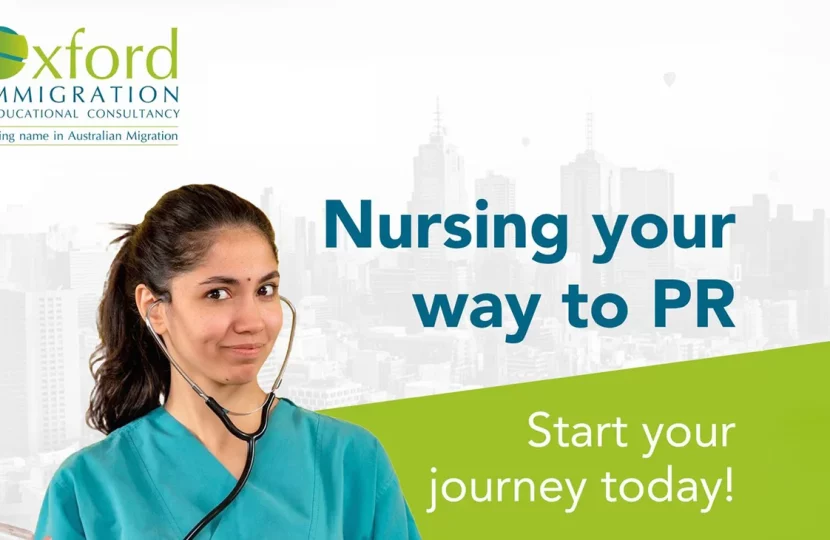Australia’s healthcare system thrives on a dedicated and skilled nursing workforce. 1 With an aging population and a growing demand for quality care, the need for registered nurses continues to rise. 2 This presents a fantastic opportunity for qualified nurses overseas who aspire to build a fulfilling career and secure permanent residency (PR) in Australia.
This comprehensive guide delves into the key steps and valuable tips for nurses aiming to navigate the pathway to PR in Australia.
Understanding the Australian Nursing Landscape
Demand for Nurses in Australia
The Australian government recognises nurses as a critical part of the healthcare system. The Department of Health identifies them as a high-demand occupation, with consistent projections for ongoing need 1. This translates to a vibrant job market with ample opportunities for qualified nurses.
Types of Nursing Roles
Australia offers a diverse range of nursing specialisations. Some of the most sought-after areas include:
- Registered Nurses (RNs): These nurses provide direct patient care across various clinical settings like hospitals, aged care facilities, and community care services.
- Enrolled Nurses (ENs): ENs work under the supervision of RNs and provide essential nursing care tasks.
- Midwives: Midwives specialize in the care of women during pregnancy, childbirth, and the postpartum period.
- Nurse Practitioners: Nurse Practitioners (NPs) have advanced qualifications and can independently diagnose, prescribe medications, and manage a wider range of patient conditions.
Qualifications and Registration Requirements
To practice nursing in Australia, you’ll need to meet specific qualification and registration requirements. These vary depending on your background:
- Australian Qualifications: If you completed your nursing education in Australia, ensure your program is accredited by the Australian Nursing and Midwifery Board (NMBA) 4 .
- Overseas Qualifications: Nurses with qualifications obtained overseas need to undergo an assessment by the Australian Health Practitioner Regulation Agency (AHPRA) to verify their qualifications meet Australian standards 4.
Navigating the Visa Process
Obtaining the right visa is crucial for working and residing in Australia. Here’s an overview of the visa options and key considerations for nurses.
Skilled Visa Options for Nurses
Several skilled visa pathways can lead to PR for nurses. The most common ones include:
- Skilled Independent Visa (Subclass 189): This visa allows you to apply for permanent residency based on your skills and qualifications, without requiring employer sponsorship 5.
- State Nominated Visa (Subclass 190): Some Australian states offer additional points to nurses in their skilled migration programs, potentially leading to faster processing times 5.
- Employer Nomination Scheme (Subclass 186): If you secure sponsorship from an Australian healthcare facility, this visa allows you to work and potentially gain PR in Australia 5.
Meeting English Language Requirements
To qualify for migration visas, you’ll need to demonstrate English language proficiency by achieving a minimum score on an internationally recognized test like the International English Language Testing System (IELTS) 5.
Preparing Your Visa Application
A successful visa application requires careful preparation. Here are some key steps:
- Gather necessary documents: This includes proof of your qualifications, work experience, English language proficiency, and other supporting documents as specified by the Department of Home Affairs 5.
Consider professional guidance: Immigration lawyers or migration agents can provide valuable assistance with navigating the visa application process.
Stay updated: Visa processing times and requirements can change. Make sure to check the latest information on the Department of Home Affairs website 3.
Gaining Work Experience in Australia
While not mandatory, gaining Australian work experience strengthens your PR application. Here’s how to get started:
Finding Nursing Jobs
- Job Boards: Popular job boards like Seek, Indeed, and Healthcare Jobsite list nursing vacancies across Australia.
- Nursing Agencies: Agencies can connect you with temporary and permanent nursing positions in various settings.
- State and Territory Nursing and Midwifery Boards: These boards often have career resources and job boards for nurses.
- Direct Applications: Research hospitals, aged care facilities, and other healthcare providers directly for potential job openings.
Building a Professional Network
Networking with established nurses in Australia can open doors to opportunities. Here are some tips:
- Join Professional Associations: The Australian College of Nurses and Midwives (ACNM) and other professional organizations provide networking events and resources.
Attend Industry Events: Conferences and workshops offer opportunities to connect with colleagues and potential employers. - LinkedIn: Build your online professional profile on LinkedIn and connect with other nurses in Australia.
Adapting to the Australian Healthcare System
Take some time to familiarise yourself with the Australian healthcare system. Resources like the Australian Institute of Health and Welfare (AIHW) provide valuable insights
References
https://www.health.gov.au/topics/nurses-and-midwives
https://www.health.gov.au/sites/default/files/2023-08/aged-care-industry-labour-agreement-webinar-slides.pdf
https://immi.homeaffairs.gov.au/visas/getting-a-visa/visa-processing-times/skilled-visa-processing-priorities
https://immi.homeaffairs.gov.au/what-we-do/skilled-migration-program/recent-changes/new-aged-care-industry-labour-agreement
https://www.nursingmidwiferyboard.gov.au/Accreditation/IQNM/Before-you-apply/Immigration-and-employment.aspx
@oxfordimmigration Important Update on EOI and ROI for Australian PR! 📞 Ph: 03 7067 5884 🌐 W: www.oxfordimmigration.com Email: contact@oxfordimmigration.com.au #AustralianPR #EOI #ROI #VisaUpdate #OxfordImmigration #MigrationUpdate #PermanentResidency #VisaConsultancy
♬ original sound - oxfordimmigration
